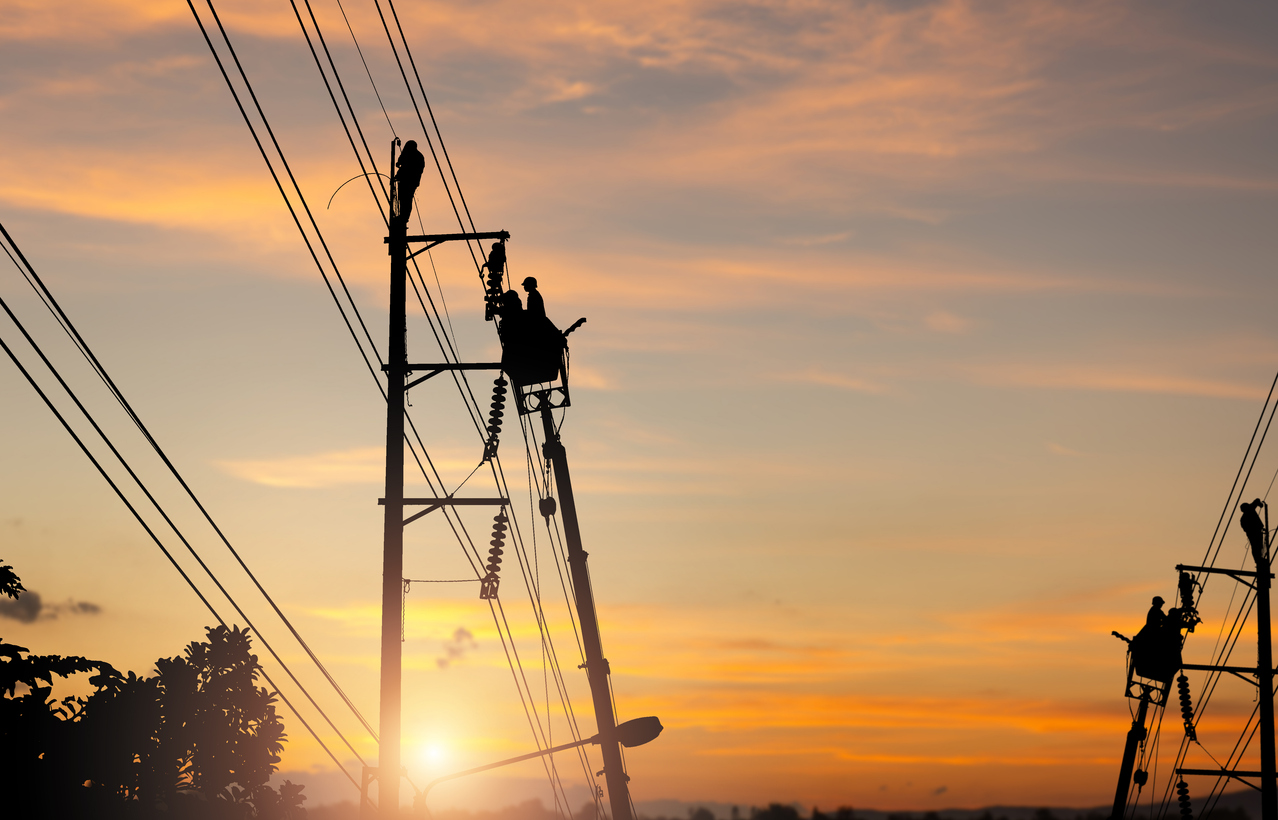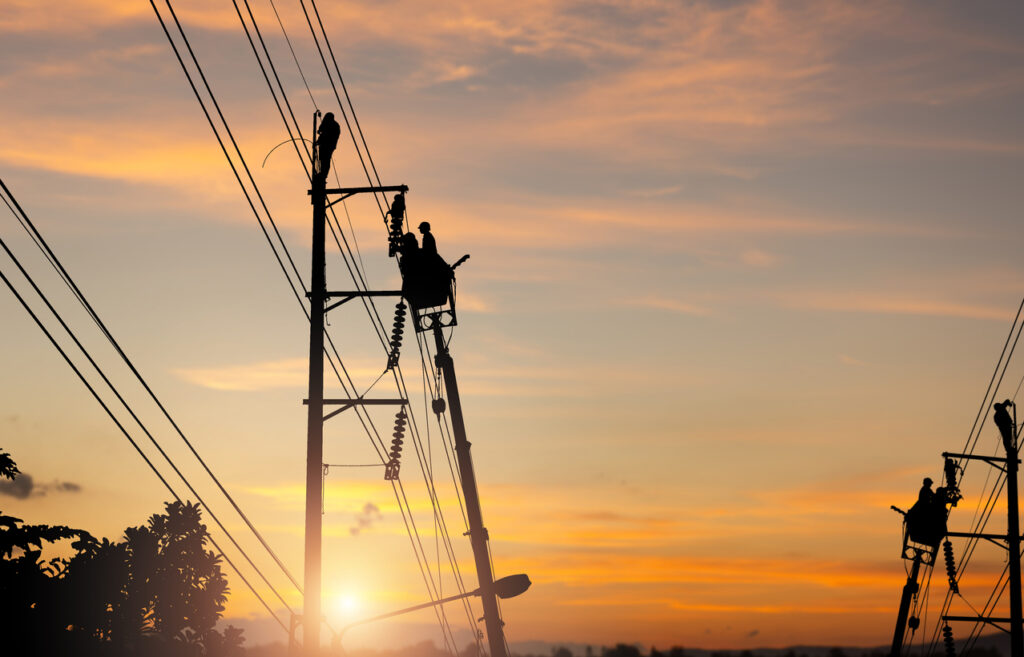
More than 30 million households in the United States are energy insecure, meaning that they are unable to adequately meet household energy needs.1 High energy costs as a fraction of household income — called energy burden — is a major stressor on the finances of low-income households.2 In the U.S., around 3,000 electric utility companies3 are serving more than 140 million customers, with investor-owned utilities (IOUs) serving 72% of the U.S. electricity customers, having a great influence on the essential part of life for their customers. They have become very powerful industries with many challenges including rising costs due to load growth and climate impacts as well as inertia or backsliding on the need to transition off of fossil fuels. This has driven communities to seek reforms and structural change through regulatory and legislative action, often through a lens of reclaiming power for the benefit of communities.
Utility justice is a grassroots movement of communities demanding justice from utility companies who are profiting off energy at the expense of climate-impacted communities.4 Climate and energy justice advocates are working to transform the energy sector with the advancement of energy democracy policies such as municipalization and other means of localizing control of the electricity system, often with a focus on distributed solutions that foster community energy resilience and economic benefit. From this movement, there have been numerous campaigns, coalitions, playbooks, reports, etc, for the advancement of utility justice by pushing for a restructuring of our energy system that is decentralized, democratized and that meets the needs of frontline communities. Ranging from topics that address energy justice in utility regulation such as increasing transparency in how utilities are governed and regulated or addressing energy affordability in rate cases.
At Just Solutions, we believe in movement-wide learning and innovation and provide education to deepen understanding of justice-centered solutions and build a broader base of support. Although not a comprehensive list, the following literature review is a list of relevant articles and reports that showcase the vast research conducted by environmental justice advocates, practitioners, and academics in the field. This includes work by key organizations in the energy justice field such as the Initiative for Energy Justice, The Chisholm Legacy Project, Energy Democracy Project, and Reclaim Our Power. We hope this can be useful for organizers, advocates, and anyone interested in learning about the electric utility industry.
Justice-Centered Articles on Utilities and Utility Justice
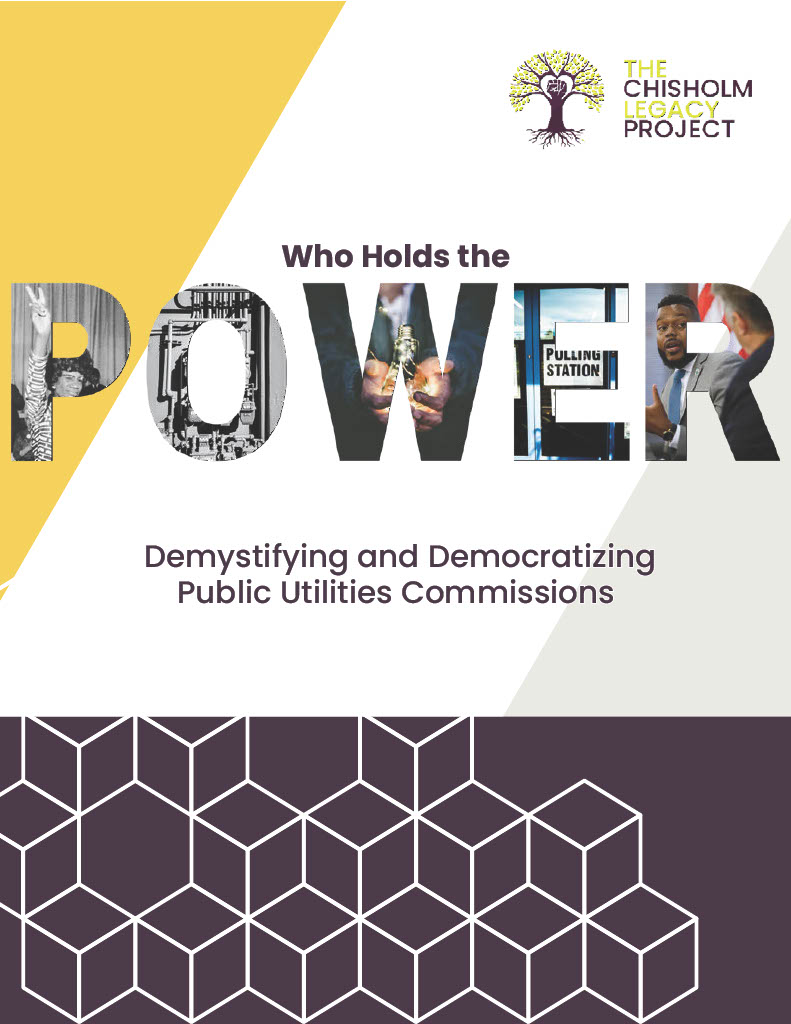
Who Holds the Power; Demystifying and Democratizing Public Utilities Commissions by the Chisholm Legacy Project demystifies Public Utilities Commissions while also showcasing how one can ensure that they reflect and represent the interest of those they serve. The report focuses on ensuring equitable and representational governance in energy regulation and does so by breaking down commission types, the impact of the current model, and the demographics and backgrounds of commissioners. This report establishes the critical role that PUCs play in shaping energy regulation and policy while providing several case studies that illustrate the role that PUCs have played and can play regarding energy equity.
Utility System Brief Series by The Climate + Clean Energy Equity Fund covers an overview of the utility system, energy justice, and 100% renewable energy targets. The first of the series, Utility System Brief: Overview of the Utility System covers an explanation of the three main types of utilities, a brief history of the rise of investor-owned utilities, and an overview of other models utilities. The Energy Justice: An Evolved Model brief takes a snapshot of the current utility system, injustices of the current system, key frameworks for developing equitable utility policies, and potential policy solutions. The third brief, 100% Renewable Targets, provides an overview of renewable portfolio standards and both challenges and frameworks for developing equitable renewable energy targets and mandates. They have also developed a Utility System Renewable Policy Playbook, which is a compilation of equitable policies that have been proposed or passed in the United States. The playbook can support advocates in their research for language and best practices to incorporate into their legislative work.
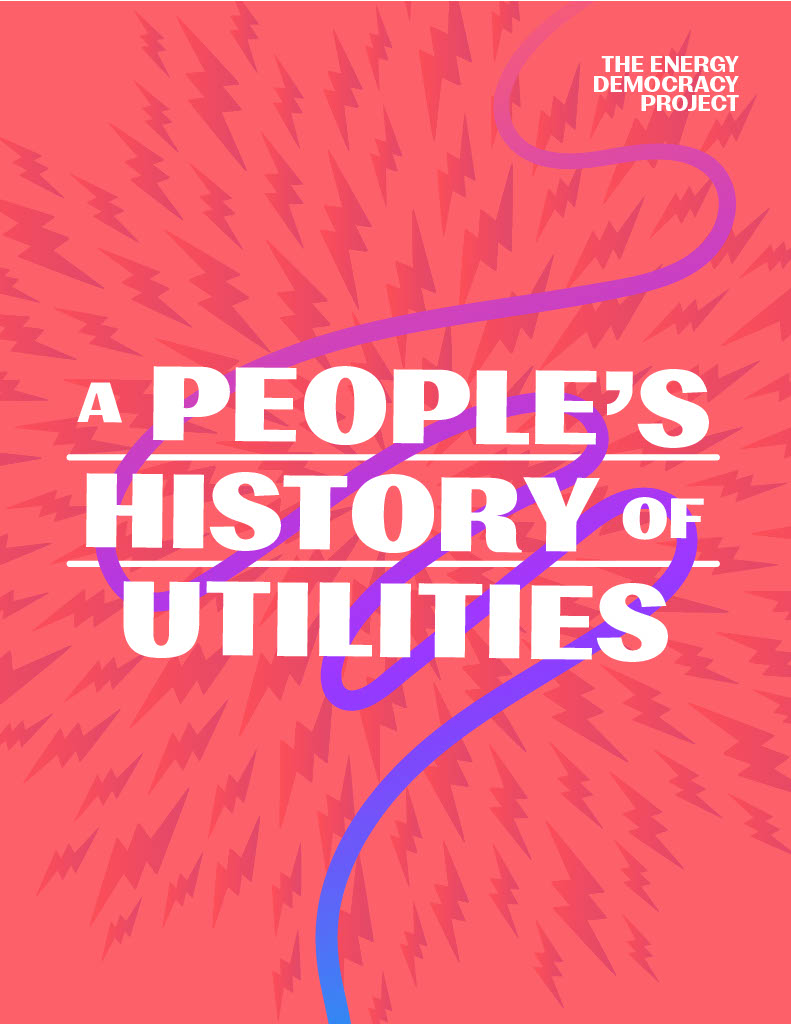
A People’s History of Utilities by the Energy Democracy Project summarizes the origins of our current energy system. It’s broken down into four sections, starting with a history of energy utilities. From the beginning of widespread electricity to the rise of corporate utility companies, the role of public power (public and municipal utilities), and deconstructs “natural monopolies.” The second section looks at the fight to take back the utilities, including utility industry abuse and the role of power management authorities. The third section focuses on the “energy regulatory shake-up”, including regulation expansion to “deregulation” electricity markets. The report’s last section explains how environmental concerns have transformed the energy sector with the rise of energy democracy such as municipalization, and the right for local government to take over and operate the utilities within their local area.
The People’s Utility Playbook also by the Energy Democracy Project exposes the tactics of electric utilities and shares how communities have built power to resist. Their efforts with this information are to build a democratic energy system that prioritizes justice. Meant for advocates confronting energy utilities, the first section displays the different types of fights waged between utilities and energy activists so readers can best position themselves when confronting utilities. The second section shares the strategies and tactics that utilities use against activists, and the methods they can use to apply pressure. The list of tactics includes topics such as raising rates, shut-downs for failure to pay, investments in fossil fuel infrastructure, and co-opting the transition to renewable energy. Although it is not a comprehensive list, it provides an understanding of the different ways energy utilities (both public and private) continue to practice unjust energy systems.
Amp up the People – A Guide for Energy Justice Advocates in Utility Regulation by Initiative for Energy Justice and Vote Solar aims to provide a better understanding and actively engage in the energy transition. It is meant to simplify utility regulation and provide tools, resources, and strategies about proceedings, engagement strategies, recommendations to address inequities, and case studies and success stories. IEJ also has a Utilities 101: Guide, Video, and Slide Deck that was created to break down the basics of the electric utilities industry with a focus on justice.
“How Did the Utilities End Up Like This? What Are We Going to Do About It?” by The People’s Utility Commons, operated by Isaac Sevier and Maria Stama is a 12-module curriculum about the past, present, and future of the energy utilities system. The curriculum covers why utilities are more than just infrastructure and the role they play in society, how and why utilities have always been a site of struggle, the evolution of utilities, and global cross-movement solidarity in the movement. Unlike reports, this curriculum is designed as a workbook to support collective peer-to-peer learning through a mix of activities such as exercises for discussion to reflect in big or small groups, creating a space to bring in local knowledge and familiarize participants with mixed-media research tools. It takes on learning through a popular education approach to share combined experiences with the energy system and support bottom-up organizing. Their work includes a workbook and presentation.
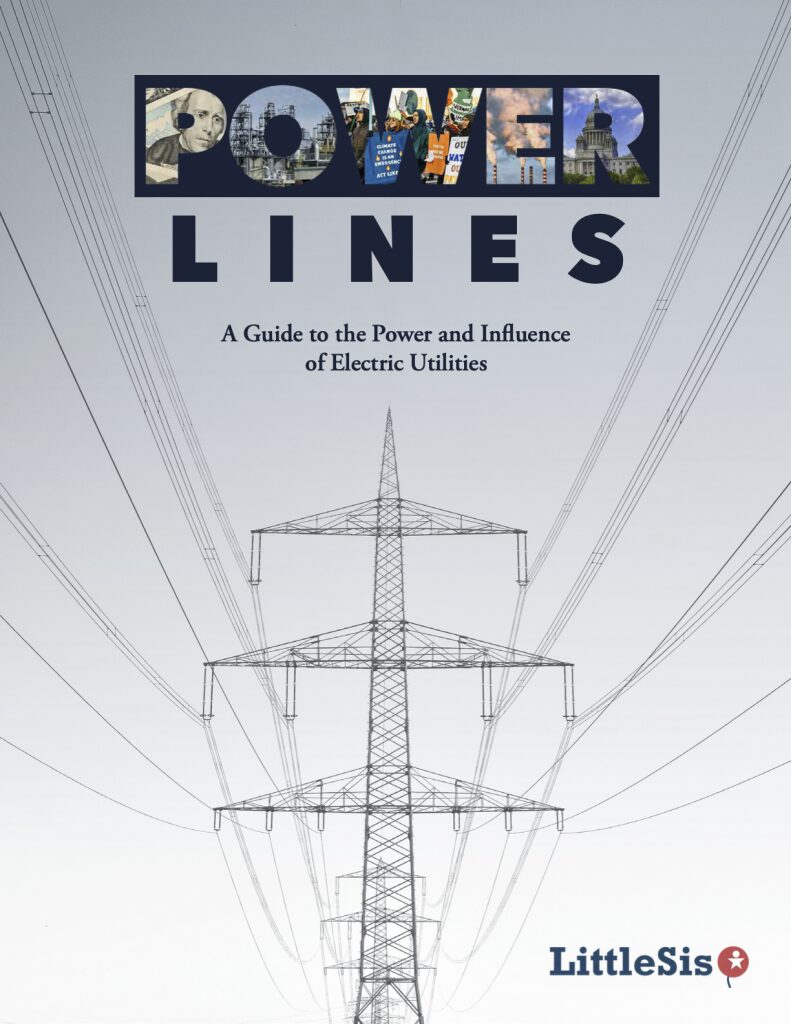
Power Lines; A Guide to the Power and Influence of Electric Utilities by the Public Accountability Initiative (LittleSis) explores the current utility industry power structure. It is a good 101 introduction to the industry that helps demystify some of the most powerful utility players, why they are so powerful, and who holds the power within the landscape. Although this body of work focuses more on investor-owned electric utilities, it provides a breakdown of utility power structure, offers strategies for researching utility corporate power, presents case studies of utility power at the state and city levels, and profiles local movements that are leading the fightback against utility power. The Power Lines hub provides stories from on-the-ground organizers involved in major campaigns and other resources to learn more about your local utility.
Power Lines 102; A Guide to Challenging Electric Utility Rate Hikes also by Public Accountability Initiative provides readers with a better understanding of what is a rate case, who is involved in rate cases with a description of how the process works. As well as outlining the problems with Public Utility Commissions, how to challenge a utility corporation in a rate case, and what a win in a utility rate case looks like. The report ends with information on how to build a coalition and movement to challenge utility power, including a list of the types of groups and organizations interested in the outcome of utility rate cases. The report also includes two case studies, POWER’s Philadelphia PECO Campaign, and PUSH Buffalo’s National Fuel and National Grid Campaigns.

The Case for Golden State Energy; Benefits of a Nonprofit Utility Model to Serve California by Reclaim Our Power showcases the negative impacts of investor-owned utilities, particularly Pacific Gas and Electric (PG&E) in Northern California and across the country. Through research rooted in experiences of frontline communities, the report identifies the benefits of transitioning PG&E into Golden State Energy. This research is part of the Reclaim Our Power Utility Justice Campaign which focuses on taking on California’s failed private utility model by pushing for a restructuring of the state’s energy system that would meet the needs of the most impacted communities in California. The report uses Justice 40 Guiding Principles Priorities as a framework to assess the benefits that have been adopted by federal agencies and defined by advocates.
Although this is not a comprehensive list, we encourage our readers to share with us any literature or resource that addresses utility justice that we may have not mentioned. Over the next few months, Just Solutions will work with state partners to develop and promote model policies that address critical energy justice issues, specifically targeting the reduction of utility dependence on dirty energy, making energy more affordable, and increasing transparency and community engagement in utility management. Stay tuned for more in the coming months.
- Health Affairs, Energy Insecurity And Health: America’s Hidden Hardship, June 29, 2023 ↩︎
- Just Solutions, Energy Burden & The Clean Energy Transition, March 8, 2022 ↩︎
- Utilities are often classified into three ownership types: investor-owned utilities (IOUs), publicly owned utilities (POUs), and cooperative utilities. ↩︎
- Energy Allies, Utility Justice ↩︎
